
From SamanthaRN: “Re: West Tennessee Healthcare (Jackson-Madison County General Hospital). Cuts Baylor program, stops 403(b) matching contributions, cuts benefits, but continues construction and expansion.” Unverified.
From Candy Albicans: “Re: certifications. For a few of us, the FY is starting soon, or has just started. Which means, what do we do for the year for our career? I’m trying to figure out what I want to go with. We have CPHIMS, PMP, HL7 Cert, ITIL, HFMA, and vendor certifications.” Personally, I would first look at academic credentials – certainly a bachelor’s if you don’t have one, a master’s if you do, or maybe even a second master’s (an MBA if you have a healthcare credential or vice versa). Or, a master’s in project management or IT. I like certifications only if they are immediately useful – if you’re doing apps work, especially with Epic, it’s probably worth it to get certified if you want to keep doing that.
From Stan the Man: “Re: ONC. Did they miss the deadline to publish guidance on Regional Extension Centers? ‘The Secretary shall publish in the Federal Register, not later than 90 days after the date of the enactment of this title, a draft description of the program for establishing regional centers under this subsection.’”

Jon Manis, CIO of Sutter Health, provided this communication Monday to HIStalk’s readers concerning Sutter’s layoff notices that went out that day. “In previous HIStalk post I committed to giving you the facts about Sutter Health’s Information Services (IS) staffing review. I make good on that commitment today. Due to the continued economic decline, today we are announcing a staffing reduction and restructuring. This decision was one of the most difficult I’ve ever had to make. We are much like a family here at Sutter Health, so having to lose even one of our valued employees is especially difficult for all of us. Today is an extremely hard day for all of us, and we’re doing everything we can to fully support our employees. Unfortunately, 121 of our employees based at our IS facility in Rancho Cordova received notification that they will lose their jobs on July 17, 2009. These are dedicated and talented professionals who have provided tremendous value to our organization. Unfortunately, these staffing changes are necessary. We have a higher responsibility now more than ever to our patients who pay for health care to be good stewards of our resources and to keep our services affordable. To fully support our employees whose positions are being eliminated, we will not be asking them to report to work after today. We want to give them the next two months paid, before severance benefits begin, so they can focus full-time on finding new job opportunities. They will have the full support of an extended Human Resources team and comprehensive outplacement services. Sutter Health and our affiliated hospitals and physician organizations continue to employ approximately 1,500 IS staff in Sacramento and other communities around Northern California who support innovative technologies, like our Sutter-wide EHR. Our commitment to advanced clinical technologies and our enterprise EHR has not waivered and will not change. What has changed is our access to capital and that has impacted our aggressive deployment schedule. We recently launched our first hospital-based EHR in Burlingame – by any measure a very successful EHR implementation. However, due to the economic downturn, hospital-based installations will not resume until sometime after 2009. In addition, we will accelerate the completion of our EHR rollout to our affiliated physician organizations.”
From Neal’s Pizza Guy: “Re: Cerner layoffs.” Cerner’s reduced NPfIT scope of work leads to layoffs of unspecified numbers in the UK.
From Redmond Radical: “Re: Microsoft. Huge attaboys at Microsoft on Peter Neupert’s team last week as their strategy to destroy certification scores a big win. Peter’s testimony before Congress and in private meetings pays off. Amalga, their lead product, ceases to to have a market if you have interoperability. Don’t the academics from Boston know they are being played?” Interesting theory, but Amalga (along with a lot of other Microsoft products) doesn’t really lose value with interoperability since it provides visibility into a hospital’s own data and workflow. The argument would have been stronger using HealthVault as an example, but I don’t necessarily think Microsoft is all that interested in certification in any case (bring up HIPAA and their ears will perk up).
From Pat Hanns: “Re: Meditech. I have to quibble with the 2,000 hospital customers you cited. Around 250 are international with just clinical systems, 250 are HCA running an aging and customized version of Magic clinicals, and 250 use only 1-2 applications such as lab. That leaves about 1,200 US hospitals: 600-700 on the old Magic product and balking at large upgrade fees, 500-600 on client-server (not really a true C/S like Paragon), and four on Release 6, their new Focus programming language/database. That adds up to about 2,000, but I will surely defer to anyone from Meditech who can clear up the confusion and publish a list of the actual sites.”
From HIT Man: “Re: ONC. I watched a live feed of Dr. David Blumenthal addressing a room full of healthcare IT and government types at VCU in Richmond Monday. Dr. Blumenthal was, in a word, uninspiring. All he could say about his 8+ years of using an EMR as a provider is that it had once caught a potential drug/drug interaction he was prescribing and he was once able to see the results of an imaging study he was about to order but that had been done already a few weeks before. I know he has only been on the job for four weeks, but there was nothing in his 15-20 minute speech (no notes, no slides) to indicate that he is going to bring much insight, vision, or managerial capability to his national coordinator role. I would like to be very, very wrong about this.” I think it’s too early to judge him on one speech, especially considering the number of them he’ll eventually give (or any speech at all, actually, since glibness isn’t a prerequisite for the job). I would be more worried if he were the typical politician: a glad-handing oratorical machine willing to advocate whatever cause interests the backs to which he owes scratches.

The Washington Post article about HIMSS and ARRA seems to have interested lots of folks. Let me be clear: as a trade group, HIMSS did exactly what it is supposed to do, did it skillfully, and played by the rules. That was the back story of the article: you have to admire HIMSS for having the patience and the influence to get the Obama administration to make EMRs a centerpiece even though the EMR track record is spotty at best. Whether HIMSS represents the interests of the majority of its members, many of them people like me who have seen ineffective IT projects first-hand, is the question, although lots of them probably had good intentions in supporting spending taxpayer dollars on healthcare technology. I’ve said for years that the whole “advocacy” effort isn’t something I care about. Like most government expense enabled by lobbying, I’m skeptical of the stated outcomes (other than putting a lot of government money in private hands quickly, which was the real hot button). None of that matters now – it’s a done deal. I’ll stick with my story, though: all of us provider members gave HIMSS the credibility to push the profitable agenda of its vendor members through to a naive and desperate administration willing to buy the “cost reduction and patient benefit” story (which may indeed turn out to be true, although against historical odds). I’d rather be in a providers-only organization and leave HIMSS to the more lucrative part of its mission: moving vendor iron.
Speaking of the Post article, it spawned a ton of comments, some thoughtful, most vitriolic along party lines.
A reader points out DataBreaches.net, run by an anonymous healthcare professional.
The Nashville paper mentions Credence Health as a potentially successful startup. It offers clinical intelligence and key indicator tools.
The name of a Mississippi cardiologist arrested for human trafficking and prostitution is … no kidding … Dr. Weiner. He is accused of using a “Sugar Daddy” Web site to solicit companionship. All those taxpayer-raping financial industry CEOs are walking around free and this guy is the focus of a sting involving consenting adults voluntarily bartering for items each has that the other wants? Please.
DR Systems announces its Canadian license for Unity RIS/PACS.
Jobs: Director of IS, Soarian Superuser, Cerner CPOE Activation Support.
An Australian market research firm rolls out business intelligence software for doctors in return for tapping into their EMR data, which it will sell (de-identified, it says). It was previously paying doctors directly to get access to their de-identified prescribing data.
Unrelated PC news: I switched from Carbonite to Mozy for online backups because (a) several readers said they use it, but more importantly, (b) Carbonite installs a bunch of Roxio peer-to-peer and disk watching services that were hanging up my PC, doubling the boot-up time. Mozy is working great and it’s free for a basic account. And here’s why I have a barely detectable anti-Microsoft bias: some of our crap software at work requires IE and was dragging (no surprise since IE is a pig), so I figured I’d upgrade to IE8 and take advantage of some of those touted Microsoft improvements. I should have known I was in trouble when the install program said it also had to update Windows to load IE8 (!!) It rebooted and took me right to the XP blue screen of death. It eventually recovered after several reboots, but then I noticed that some of my programs were hosed (the firewall program had lost its mind and needed to be reconfigured from scratch and Rhapsody wouldn’t play music). Firefox upgrades itself every week or two and I’ve never had a hitch and never had to reboot. Guess which browser doesn’t suck?
Eclipsys PeakPractice (the former Bond Clinician) earns conditional CCHIT 08 Ambulatory certification pending completion of advanced ePrescribing requirements.
Thanks to MED3OOO for remaking their sponsor ad without the animations and transitions that some readers said they find distracting. I appreciate their noticing the reader survey results and taking that step on their own. Also, a reader asked to have the links underlined in HIStalk Practice like they are here, so that’s done, too.
Maryland’s governor was to have signed a bill today that requires private insurance companies to give doctors financial incentives to use EMRs (sounds kind of socialist, doesn’t it, to be telling one private industry group how to conduct business with another?). Also required by the bill: a statewide HIE.
RelayHealth announces H1N1 tools: a questionnaire and educational content for physicians and antiviral prescribing pattern information for CDC.
A BIDMC study says patients will trade some privacy for the convenience of electronic medical records and expect to have computers play a positive role in their medical care, including self-care.
Strange: on the subject of accountability for medical software bugs, AMIA says members don’t agree enough to allow it to have an official opinion. Of course, it has software vendors as corporate members, so you can probably guess which side those particular members are on.
Another example of government efficiency: CMS and ONC says they need nearly $1 billion worth of IT systems just to track ARRA incentive payments.
E-mail me.
HERtalk by Inga
From: Charlie Brown “Re: shoes.I have learned so many things about healthcare IT from you and Mr. H. It has given me many insights. Fantastic stuff. I will have to show my wife your picture (of my shoes on LinkedIn). She will want to buy a pair. With two kids in university programs, that hobby has been curtailed.” Gentle reader: here is another insight. A great pair of shoes is cheaper than psychotherapy, a convertible, or an affair. Time to pony up.
A businessman is found guilty of grand theft, embezzlement, and tax evasion for selling human body parts donated to UCLA’s medical school. Ernest Nelson earned $1.5 million over a four-year period selling cut-up heads, torsos, and other parts to pharmaceutical research companies. Nelson schemed with the director of UCLA’s willed body parts program, paying the director $43,000 in return for gaining access to bodies. The director pleaded guilty last year; Nelson faces up to 10 years in prison.
MEDSEEK announces it added five new hospitals and health systems in the first quarter of 2009.
Rhode Island Hospital agrees to examine and revise its surgical safety procedures after a surgeon begins operating on the wrong side of a patient’s mouth. Over the next two weeks, surgery will be suspended for at least two to three hours in each specialty so that doctors and nurses can review policies and consider how they applies to each type surgery. It was the fifth reported surgical mistake at a Lifespan health system hospital within the past five years.
Picis announces its ED PulseCheck version 4 is now a CCHIT Certified 08 Emergency Department EHR.
HHS releases $500 million to the Indian Health Service as part of ARRA. Eighty-five million dollars is allocated for HIT, with the balance earmarked for construction of healthcare and sanitation facilities and health equipment.
I’m sure that this “problem” is not unique to the UK. Over 25% of UK employees are so work obsessed they can’t resist using a laptop or PDA before going to sleep. And of that group, 57% do so for 2-6 hours every week. Sweetly, 96% say the last thing they do before going to sleep is kiss their partner goodnight.
North Dakota becomes the third state to develop an Web-based registry that allows residents to input their medical treatment preferences. The service will be voluntary and involve a yet-to-be-determined fee. The Secretary of State’s office will house the repository, which will allow instant access to a person’s healthcare directives.

Texas State’s Student Health Center selects Medicat as its EHR vendor. The health center goes live this month using electronic records and will add online forms for students and secure messaging by the fall.
Informatics Corporation of America (ICA) grows its number of users by 165% during the first five months of 2009. ICA also reports a 400% rise in client engagements in 2008 over 2007, resulting in a 150% growth in revenues.
Planned Systems International secures a government contract to provide workflow enhancements to the Armed Forces Longitudinal Technology Application (AHLTA). In March, Military Health System officials announced plans to make the $4 billion AHLTA system more functional and interoperable with the VA’s VistA.
A local newspaper interviews David Laurello, president and CEO of the Massachusetts-based Stratus Technologies. The company has been serving up state-of-the-art, industry-standard technologies since 1980, which far exceeds the lifetime of most computer hardware makers.
St. Elizabeth Healthcare (KY) goes live on IntraNexus SAPPHIRE Patient Financial Management software. They’ve been an IntraNexus customer since 1997.
The state of Michigan is now able to track obesity rates in children as part of its state-wide Michigan Care and Improvement Registry portal. The portal includes height and weight fields, enabling officials to spot BMI tends across the state.

A few weeks ago, Mr. H mentioned that Traveling HIT Man, an ambassador for Intellect Resources, had been busy helping him write HIStalk posts. More recently he has spent time with me, working and leading the Inga lifestyle. Intellect Resources’ version of Flat Stanley is supposed to accompany his caretakers on work engagements, but I have found he is quite the party guy as well. He seems to like champagne.
E-mail Inga.







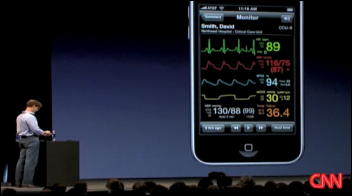

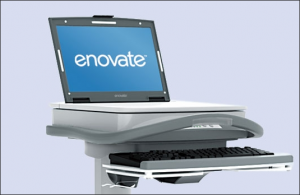



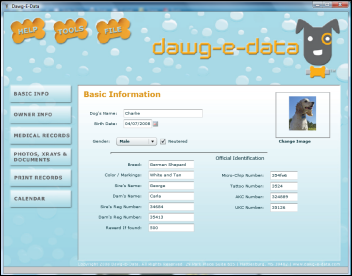



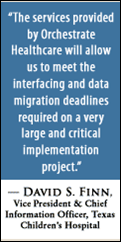



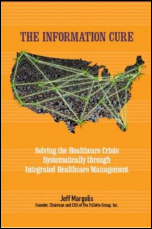
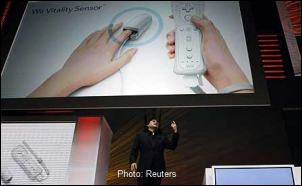




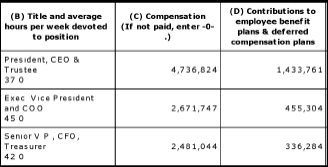


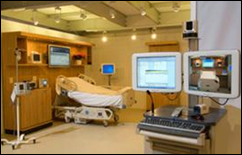




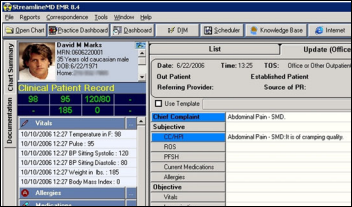





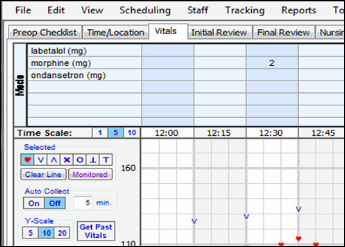
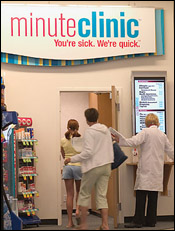

















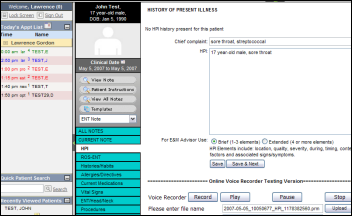



The sentence was "most people just go to Epic UGM" - that's people going to Epic's annual user conference and…